Nick Humphrey thinks the activities inside the former St. Liborius Church and Buildings could help people in north St. Louis. That’s not because of any prayers or sermons uttered inside the structure that was built in 1856 and once served as a Catholic church. Rather, it’s because of the handplants, kickflips, and lipsides that children and teens could someday execute on a skate park inside the cathedral, where people once sat on Sunday mornings.
“It’s exactly what the neighborhood needs,” said Humphrey, a truck driver and father of two who is Black and grew up around north St. Louis, which is predominantly Black and has higher rates of poverty and violence than the city at large.
A group of owners and volunteers have transformed the church into SK8 Liborius Social Club, a space for skaters and artists, among others. The owners describe it as a skate park inside of a giant art gallery and say they hope it inspires creativity in people who visit it — whether they come with a skateboard, paint brush or musical instrument, or come empty handed.
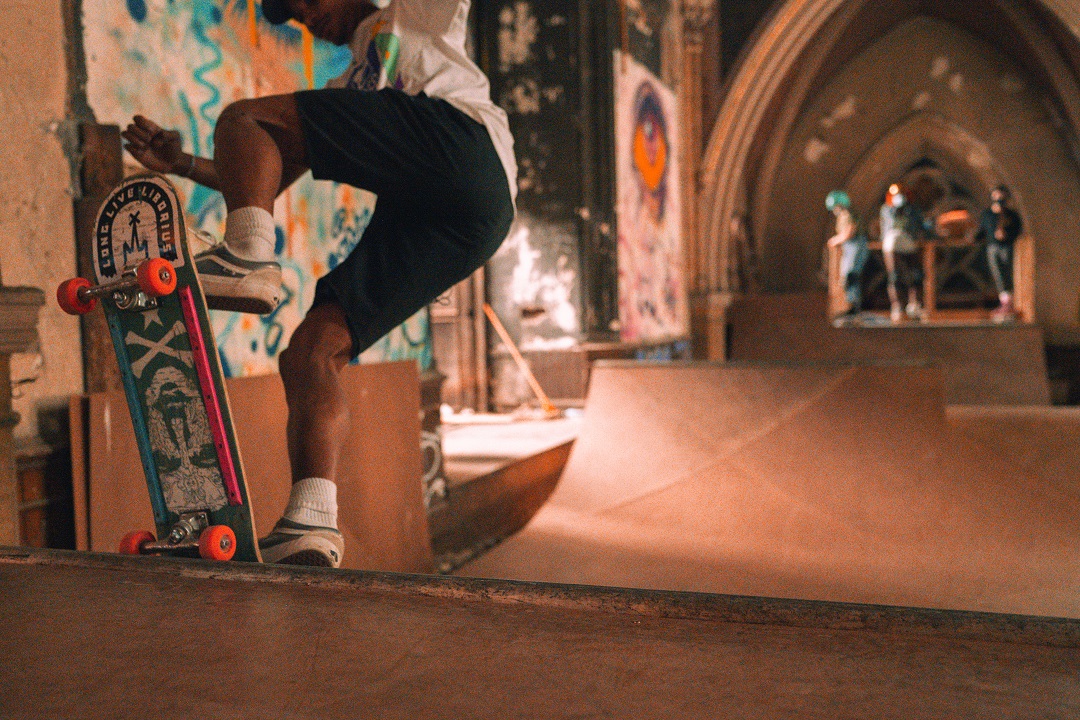
Skating amid murals and graffiti. (Benjamin Muller)
“You don’t find out you’re going to be a printmaker if you never do any printmaking. You’re just trying to survive in your neighborhood,” said Dave Blum, who founded SK8 Liborius with Bryan Bedwell, a skater who grew up in St. Louis and Arnold.
“There’s this depressing loss of creative potential that we hope to solve a bit,” Blum said.
Unfortunately, the church is currently closed to skaters because the founders are working to bring it up to code. To do so, they are trying to raise $1 million.
Until then, most of the space is cold in winter because it doesn’t yet have central heat. But there is plenty to take your mind off that.
Alongside the stained glass and Christian images, the walls are covered in murals done in a graffiti style, including one on the altar of a holy-looking man holding up two skateboards and wearing a hat that states, “D.I.Y. 4 LIFE.”
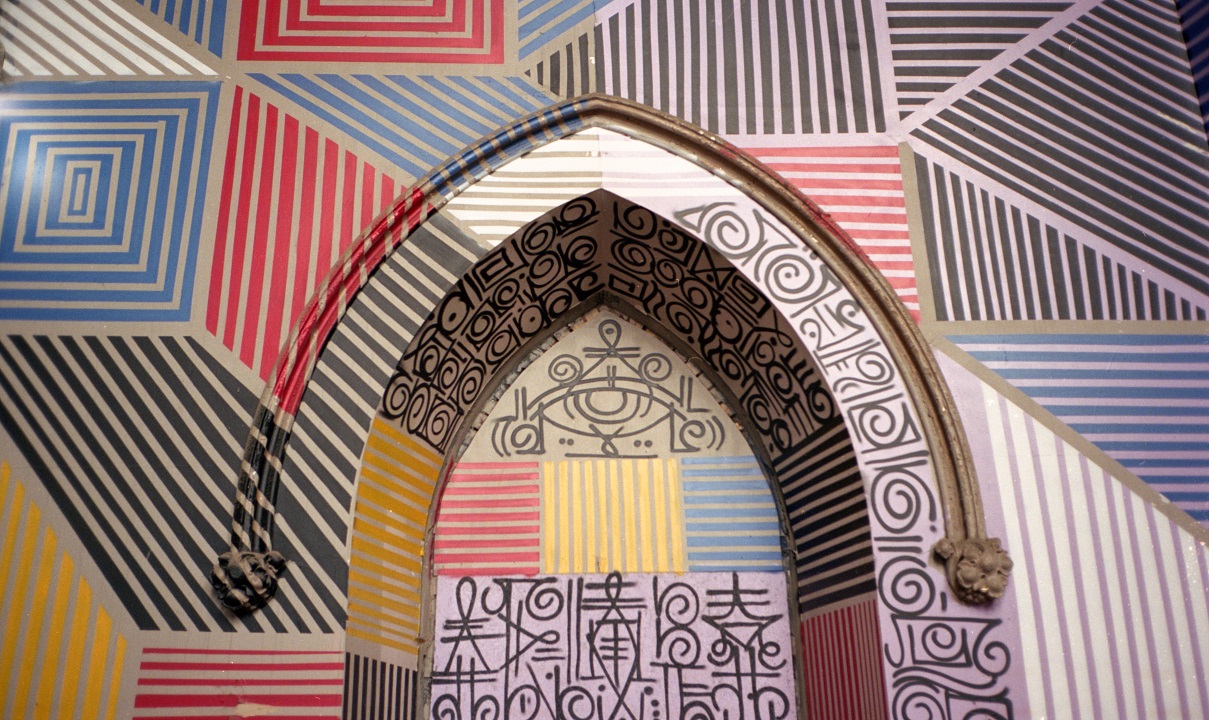
Artistic archway. (Benjamin Muller)
The space has the subversive spirit of the City Museum, which makes sense because Blum worked with that facility’s founder, Bob Cassilly, to transform the International Shoe Company warehouse into a funky institution that attracts people from around the world.
“I watched Bob do crazy stuff, like pick up Ferris wheels and put them on the roof, and what I learned was: You can do it,” said Blum, a welder who also owns Such and Such Farm. “This is just another project. And although it’s big and daunting and large and complicated, you just kind of eat the elephant one bite a time.”
Blum learned about the church after he bought land south of St. Louis for his farm — without knowing much about farming. He visited New Roots Urban Farm next door to the church and, after developing a relationship with its operators, also got connected to Karen House, a Catholic organization that ran a homeless shelter in the convent, one of three church buildings on the site.
But the buildings fell into a state of such disrepair that they almost couldn’t be saved, Blum said. A decade ago, he persuaded the organization to transfer ownership of the church and rectory to him, so he could fix them up.
“They need to find someone stupid enough to take liability of the church,” joked Joss Hay, a skater and general contractor from Scotland who is also an owner of the building.
“And I’m that moron,” said Blum.
Blum and volunteers started by hauling more than 15 dumpsters worth of broken material covered in bird poop from the cathedral.
The owners also established a nonprofit and held fundraisers, such as raves and punk shows in the basement, to pay for repairs. They started to install ramps and rails, and in 2014, skaters began using the space.
The owners have taken a communal approach to fixing up the church. Supporters ranging from age 13 to mid-50s donate their time. In some cases, the owners teach these folks skills such as how to tuckpoint or mix mortar. Local restaurants often donate food. During breaks, people grab their boards and head to the skate park.
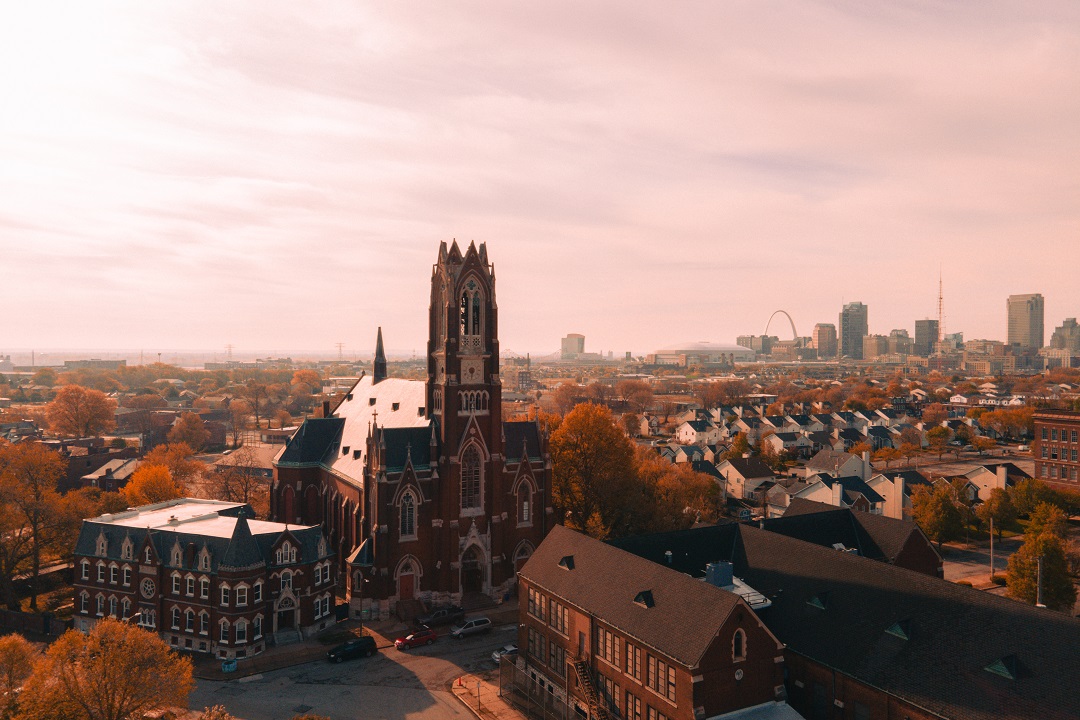
St. Liborius Church and Buildings. (Benjamin Muller)
In one case, a local mason and skater, Nick Minden, helped repair a bell tower where the capstones and tuckpointing had disintegrated. The owners paid him about $5,000 for materials, but the work was all done by Minden, the owners, and volunteers. If they had paid Minden as a contractor, it could have cost upwards of $30,000, Blum says.
Also, by taking a D.I.Y. approach, the owners and team members can serve as model for others, says Bedwell, who has built local skateparks and runs a skateboarding advocacy group called Kingshighway Vigilante Transitions.
Bedwell sees that the project, like skateboarding, as something that can teach kids the power of determination. His mom was very young when she had him, he says, and raised him on her own with little money and no car until he was 5 years old. A skateboard provided a cheap way to have fun, he said.
“Hundred bucks, you get a skateboard. Go out in the front yard, ride on the street, ride on the sidewalk — so I took to it real quick,” said Bedwell.
Skateboarding holds you accountable, Bedwell says, because you can’t just claim to be able to do a trick; you have to show people you can do it. And he and others keep trying until they successfully land it.
SK8 Liborius also requires a persistent effort. Bedwell hopes local youth will eventually say, “Look at what these guys did. They’re a bunch of idiots, but they just built this amazing, beautiful place for us all to be at,” he said.
Avian Duke, a 22-year-old skater, musician, and welder, started skating at SK8 Liborius about seven years ago. He helped fix the tower, sell T-shirts, and run skate sessions. He also now serves on the nonprofit board.
“It’s almost like being at home,” Duke said of SK8 Liborius. “As long as you’re respectful towards everyone there, you pretty much can do whatever you want — within certain limits.”
Plus, you don’t often see “skating or doing graffiti inside a church. I think that’s really cool,” said Duke.
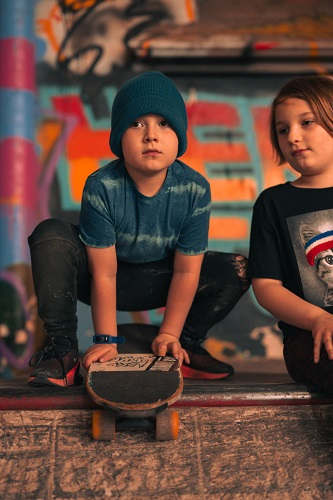
SK8 Liborius is a place for kids and adults to create, play and grow. (Benjamin Muller)
In addition to skating, the owners plan to use SK8 Liborius as a studio for artists and a shop space to teach printmaking, painting, and woodworking, among other trades.
Kordell Schneiter, a 24-year-old local artist, has been using a room in the rectory for painting.
“It’s a pretty crazy space to work in,” said Schneiter. “There’s something significant about being in a church.”
Humphrey, the truck driver who grew up in north St. Louis, now also serves on the SK8 Liborius board. Growing up, he went to local community gyms where he could play basketball after school. But many of those space have closed. He thinks SK8 Liborius could fill that void.
“It’s going to provide an atmosphere to where even if people don’t want to skate, they can come out and watch other people,” he said. “I think it’s going to be a dope impact — especially if they get to do everything they’re planning on doing.”
When asked if they are optimistic about their goal to raise $1 million, Hay doesn’t hesitate.
“Not even optimistic,” said Hay. “It’s going to happen.”
Long Live Liborius
You can learn more about the Sk8 Liborius story, watch a brief film documentary, and donate to the future of the organization at sk8liborius.com.
Author: Eric Berger is a regular contributor to Terrain Magazine.

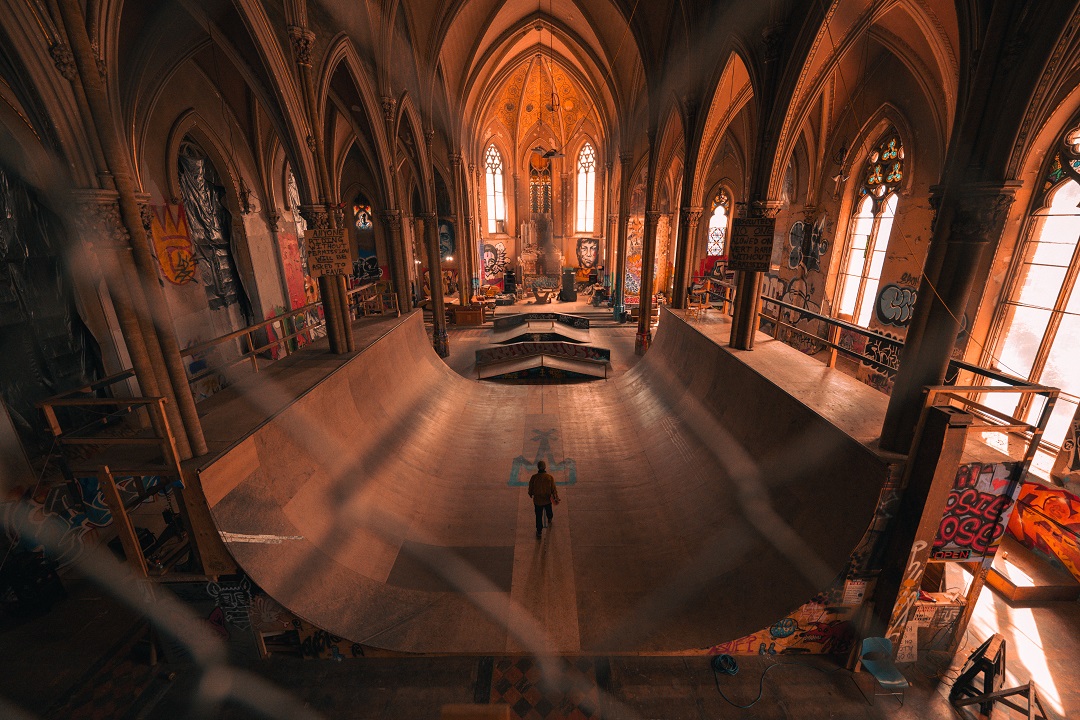
Leave A Comment